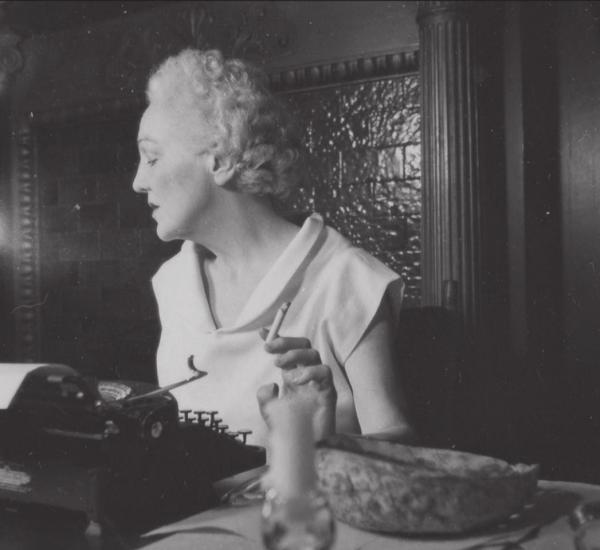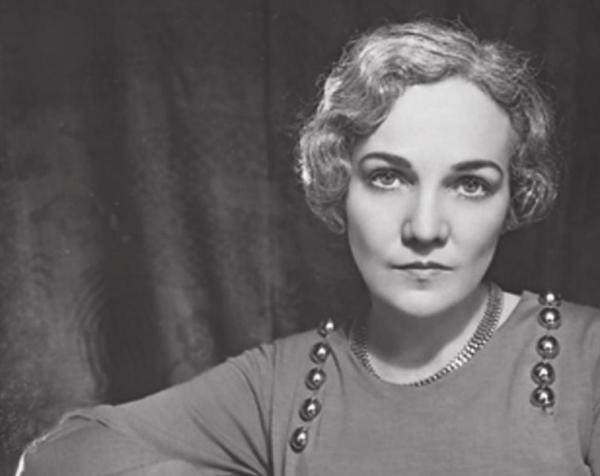KAPS namesake had her own pandemic story
Like almost all schools these days, the operation of KAPS has been disrupted by the coronavirus.
Despite being founded in 1998, KAPS, tucked in next to Market Days on FM2325, has a connection to a virus that stretches back more than 100 years.
Most people refer to the charter school as KAPS. That’s what’s displayed in large letters on the front of the school. The smaller letters on the reader board along the road spell out the school’s namesake: Katherine Anne Porter School.
Katherine Anne Porter was a journalist, author and teacher who was born in 1890 in the small central Texas town of Indian Creek. After the early death of her mother, the family settled in Kyle. They moved around to other towns in Texas and Louisiana with Katherine Anne going to school wherever she could. She married in 1906 and settled in Lufkin, but divorced her abusive husband nine years later. She bounced from job to job, before coming down with a respiratory ailment. During her extensive recovery period she decided to become a writer.
That’s where the influenza virus enters the picture.
In 1918, while working as a reporter for the Rocky Mountain News in Denver, Porter contracted the Spanish flu and nearly died. It had a lasting impact on her life.
As bad as the current coronavirus is, the Spanish flu was one of the worst pandemics in history, ranking up there with the Black Death of the 1300’s and the Great Plague of London in the 1660’s. According to the Centers of Disease Control, more than 500 million people were infected and, at least 50 million died. Other death estimates range as high as 100 million people. So many cases went unreported that no one really knows.
No boundaries
The Spanish flu knew no boundaries. Remote villages in Alaska’s frozen north were wiped out. As many as 25 million people may have died in India alone. South Africa and Persia were ravaged. In the United States, the city of Philadelphia and the state of Massachusetts were hard hit. World War I battles were impacted because so many soldiers were sick.
The disease came in waves and it was the second wave that proved especially deadly. Some victims died within hours; other simply collapsed and died on the street. Symptoms included fever and chills and the sufferer would turn blue from lack of oxygen. Their lungs would fill with fluid and they would suffocate.
Oddly, the Spanish flu did not originate in Spain. The pandemic broke out in 1918 as the United States was gearing up for World War I. In most of the nations at the time the press was heavily censored. The goal was to keep morale high and word of a deadly disease sweeping the world was not good news. Spain, however was neutral during World War I and the dis ease was widely reported there. The name stuck.
Where did it start? There are numerous theories. One has the virus jumping from a bird to a pig to humans in a little Kansas town. The disease then spread to nearby Fort Riley which was teeming with soldiers headed for the frontlines in Europe. Another theory has a group of laborers from China traveling across to the U.S. to aid the war effort in Europe spreading the flu. Whatever the cause, crowded military bases and cramped troop ships, as well as war bond parades and rallies, proved to be the perfect incubators for the virus.
Whereas the coronavirus seems to hit older people hardest, the Spanish flu killed many younger people. The flu spread rapidly on military camps and ships crammed with young men and women. In the early 1890s there was a serious flu epidemic. The older folks who survived that may have been immune to the 1918 Spanish flu.
Famous and not-so-famous
The flu affected the rich and the poor, the everyday folks and the famous. Among those to get the Spanish flu and survive are authors John Steinbeck and Raymond Chandler, silent-screen stars Mary Pickford and Lillian Gish, animator Walt Disney, future president Frank Delano Roosevelt, aviator Amelia Earhart, and freedom fighter Mahatma Gandhi.
And, 28-year-old Katherine Anne Porter.
In her book “Pandemic 1918” author Catherine Arnold tells the story of Porter’s fight to survive.
Recently divorced, Porter was earning $20 a week writing for the Rocky Mountain News. When she got the flu, hospitals were overflowing in Denver, but she was admitted to a local county hospital.
For nine days, Porter ran a fever of 105 degrees. One of her sisters travelled to Denver to look after her. Her family expected her to die. Her colleagues at the newspaper had already written her obituary.
Porter hovered between life and death, writes Arnold, delirious, in and out of consciousness.
Experimental treatment
Convinced she was on the verge of death, a group of young doctors administered an experimental dose of strychnine. They felt they had nothing to lose. Porter’s temperature dropped and, somehow, she survived.
The disease had a lasting impact. Her black hair fell out and grew back in white. It was white for the rest of her life. It took six months before she managed her first step.
Wrote Porter: “It just simply divided my life…It was I think, the fact that I had participated in death and I knew what death was, and had almost experienced it.”
Overshadowed by the “war to end all wars” the Spanish flu epidemic didn’t produce a lot of literature. Porter’s widely acclaimed “Pale Horse, Pale Rider,” a collection of three short novels published in 1939, tells the story of a newspaper woman and a soldier. The woman becomes sick with the Spanish flu only to recover and find out the soldier has died of the disease he likely caught while nursing her.
Porter went on to write short stories and teach. In 1962 she published her lone novel “Ship of Fools” which was made into a movie starring Vivien Leigh (in her final screen role), Lee Marvin and Jose Ferrer. It was nominated for eight Academy Awards (won two) and made Porter financially secure. She won a Pulitzer Prize and a National Book Award in 1966.
Porter died in 1980. She wrote: “Now if you have had that and survived it, came back from it, you are no longer like other people, and there’s no deceiving yourself that you are.”



